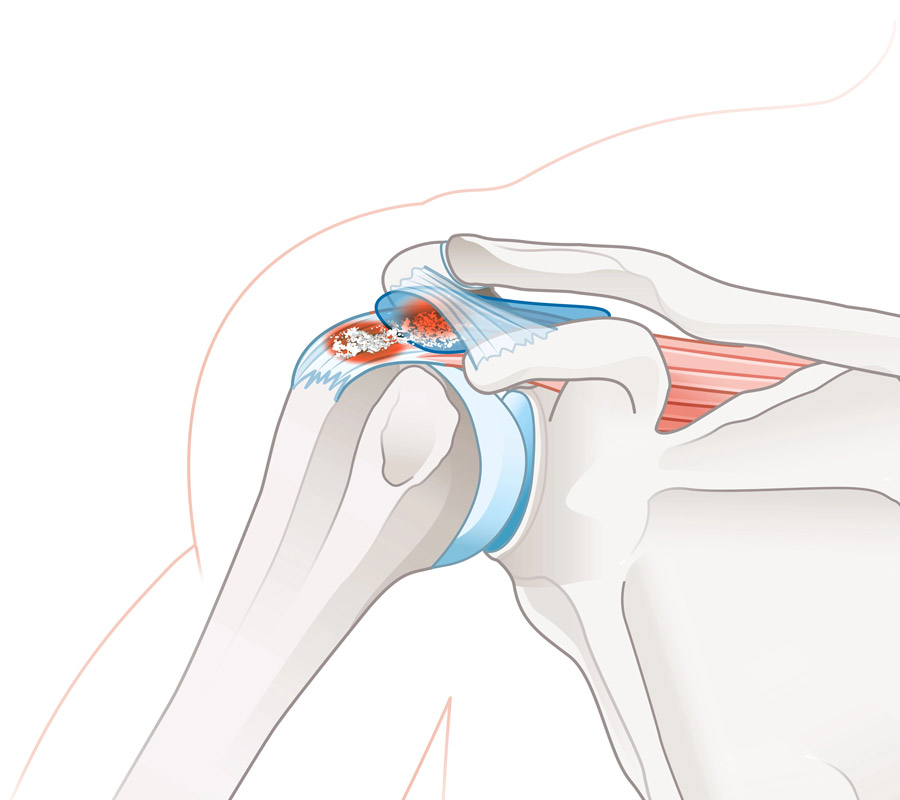Shoulder
Shoulder pain: causes, diagnostics and modern treatment methods
Rotator cuff: function, injuries and treatment
diagnosis
In addition to clinical examination, ultrasound and magnetic resonance imaging (MRI) are used as diagnostic tools. For specific treatment, it is important to assess the exact cause, extent, and quality of the rotator cuff muscle-tendon unit.
Treatment
Aftercare

Impingement syndrome: Shoulder impingement syndrome
Treatment
rehabilitation
The rehabilitation period after such procedures is short, and patients are usually largely free of symptoms and able to return to work after 3–6 weeks.
Tendinosis calcarea (calcified shoulder):
Cause and therapy
Treatment
Surgical therapies
Aftercare

Individual advice & state-of-the-art treatment methods
Minimally invasive & innovative surgical techniques
Quick return to everyday life, work & sport

Shoulder instability: causes and treatment
Habitual instability
Traumatic instability
therapy
Surgical treatment
Aftercare
- Certain movements are not allowed for 6 weeks.
- The arm is initially carried in a sling to protect it.
- Full load capacity for overhead and contact sports is only achieved after approximately 5–6 months.
Acromioclavicular joint dislocation (ACG dislocation): injury to the acromioclavicular joint
Treatment
- Conservative: Minor instabilities can be treated without surgery.
- Surgical: Severe instabilities are treated arthroscopically to restore the anatomical joint position.
Chronic injuries
Aftercare
- Movements beyond the horizontal are not permitted for 6 weeks.
- Lifting heavy loads is also not permitted during this time.
- Full load capacity for overhead and contact sports is achieved after approximately 5–6 months.

Pathologies of the long biceps tendon (LBS): pain and injuries
The long biceps tendon (LBS) runs through the shoulder joint and can cause discomfort in various locations. These include:
- Tears at the origin of the tendon in the joint (SLAP lesions)
- Changes in the course and exit point of the tendon from the joint
- Damage to the guide loop (pulley lesions)
therapy
Surgical treatment
Osteoarthritis of the shoulder joint: joint wear and treatment options
Conservative treatment
Surgical therapy
If conservative measures are insufficient, an endoprosthesis (artificial joint) can be used. There are two main types:
Anatomical shoulder prosthesis:
This design preserves the natural joint structure and is used in patients with an intact rotator cuff. A partial or total prosthesis can be implanted as needed.
Inverse shoulder prosthesis:
In cases of irreparable rotator cuff tears, this prosthesis allows continued pain-free movement by reversing the joint mechanics.
Your shoulder health in the best hands
Get advice!
Make an appointment now for a personal examination and treatment:
+49-(0)89 4140-7840
sportortho@mri.tum.de
House 524
Ismaninger Str. 22
81675 Munich

